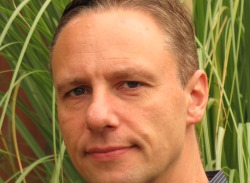DER: Control made easy

As the energy industry shifts toward cleaner and more sustainable models, it becomes increasingly critical for utilities to be able to manage and control the customer side of the power grid. One proven way to do that, says Rolf Bienert, managing and technical director, OpenADR Alliance, is Demand Response (DR) programs, which have been common for many years.
These programs typically incentivise participants to shift their energy usage away from peak consumption times, in order to reduce dependence on costly and inefficient peaking power plants and to overcome weaknesses in transmission and distribution systems. In most cases, DR programs use either direct energy reduction/increase requests or variable price messages to attract customers to participate.
Distributed Energy Resources (DER), however, now vastly increase the complexity of demand-side control by introducing more generation assets at the expense of grid reliability and power quality. Industry communications and connectivity standards, like OpenADR, which have long helped utilities manage DR resources, can now also play a similar role with the growing pool of diverse DERs.
The latter not only includes renewable energy but also energy storage, electric vehicles (EV), and EV charging – as well as traditional DR targets. In a recent example, Hawaiian Electric Companies has specified OpenADR as the standard protocol for communication between the utility and customer-sited DER.
But how much control do utility operators need to effectively manage all the resources in their power grid? This question still seems open ended at this point in time, though there are some use cases and models available that can help establish some ground rules.
In our view, DERs can be categorised in two groups based on size and ownership. However, there is a gray area between the two that will have to be addressed in the future as well.
- Large, utility-controlled systems
It makes sense that distributed power generators, battery storage, and resources of any kind with capacities larger than a certain (as yet undefined) threshold need to be controlled by the utility operator. Just like a fossil fuel or nuclear power plant, the generation capability of these large-scale DERs is and will be vital for the grid stability – and we can assume that there are not too many of these resources around. Therefore, tying them into the control network of the utility appears to be the right thing to do. Cyber attacks can also be kept in check with this limited number of endpoints.
- Small, customer-owned systems
On the other side of the scale, we find the (truly) distributed resources, such as privately-owned residential solar, EVs, home batteries, and the like. These DERs, taken together in functional or geographical groups, will also represent a large percentage of future generation and will somehow have to be managed by the grid operator.
However, there are several challenges. Such resources are not owned by the utility but by the customer, so full access to the controls may not be readily granted by owners. Further, we are now talking about thousands, if not millions, of small-scale systems. Addressing and controlling every one of them will be challenging from a data connectivity, analysis, and cyber security perspective.

OpenADR in Europe
Pacific Gas and Electric, an adopter of OpenADR, has partnered with Dutch utility Elaad NL in the Global Grid Integration Project, which seeks to develop EV charging solutions that scale globally. International standards like OpenADR (IEC 62746-10-1) are crucial to enable such global scaling. Among the other project participants is Driivz, a recent new European member of the OpenADR Alliance, which has built an OpenADR-compliant, cloud-based EV Charging Management Platform.
In the U.K., the Energy Networks Association cites OpenADR as one of the flexible ICT connections that are foundational to their Open Networks Project to enable distribution network operators to fully transition to the smart grid.
European-based technology innovators are currently building OpenADR-based products. Slovenia-based Solvera Lynx has developed the GemaLogic Energy Flexibility Platform, a virtual power plant implementation platform that leverages OpenADR’s event messaging capability.
So what’s next? As the energy industry transforms into cleaner energy, industry standards such as OpenADR will only continue to help utilities manage the growing pool of distributed energy resources (DER), which includes renewable energy, energy storage, demand response and electric vehicle charging. The OpenADR standard is key to support communications to all DER resources to manage changes in load shape, energy inputs and power characteristics of DER assets.
The author is Rolf Bienert, managing and technical director, OpenADR Alliance
Comment on this article below or via Twitter:
Recent Posts
- What Is an Exoskeleton Suit?
- Where can you use an ultrasonic motor?
- Smart Camera: System That You Can Use for a Wide Variety of Purposes
- Why Is the Smart Toothbrush Better Than a Regular One?
- Microcontrollers: An Integral Part of Embedded Hardware
- Air Quality Monitoring System: Why It’s So Important in Modern Realities

